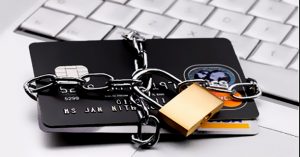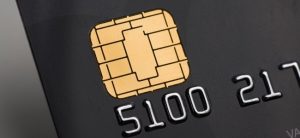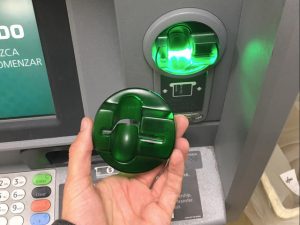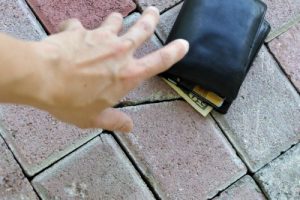 Credit card fraud can cost you a lot of time and money. I know this is a big surprise, right? But how much can it actually cost you? A LOT. In fact, it is estimated that credit card fraud costs consumers and businesses $190 billion every year. Although these tips are basic and straightforward, here are a few necessary and essential steps to protect yourself against the headaches of stolen credit card information and fraud.
Credit card fraud can cost you a lot of time and money. I know this is a big surprise, right? But how much can it actually cost you? A LOT. In fact, it is estimated that credit card fraud costs consumers and businesses $190 billion every year. Although these tips are basic and straightforward, here are a few necessary and essential steps to protect yourself against the headaches of stolen credit card information and fraud.
Physical Security
Basic, right? This is the easiest way to have your credit card information stolen and for someone to then use it to make fraudulent purchases: physical theft of your card. Make sure you keep track of your cards and secure them properly. All too often we get replacement cards in the mail, toss them in a drawer, glove box, or other unsecured location, and then forget about them. Keeping track of all of your cards can be challenging these days, but doing so could not be any more important in an increasingly cash-less society. So keep any eye on every single card you own, even the ones you don’t use. Shred the ones you have no use for, and secure the ones you use every once in awhile, and keep a watchful eye on the ones you use regularly.
Only Use Your Card On Trustworthy Sites
 No doubt you’re rolling your eyes at this recommendation. But consider this: it is estimated that consumers lose approximately $29 million every quarter on fraudulent websites. $29 million! So if you’re buying something online (aren’t we all?), make sure you’re buying from a site you trust. There are a few special security measures of note. First and foremost, make sure the site you’re buying from is the site you think it is; you don’t want to enter all of your personal data on a convincing mock-up. Be sure to double-check the URL and only access the site through a clean link. Never enter your data on a site you reached via a link from an unfamiliar or redirected source.
No doubt you’re rolling your eyes at this recommendation. But consider this: it is estimated that consumers lose approximately $29 million every quarter on fraudulent websites. $29 million! So if you’re buying something online (aren’t we all?), make sure you’re buying from a site you trust. There are a few special security measures of note. First and foremost, make sure the site you’re buying from is the site you think it is; you don’t want to enter all of your personal data on a convincing mock-up. Be sure to double-check the URL and only access the site through a clean link. Never enter your data on a site you reached via a link from an unfamiliar or redirected source.
And make sure you watch to make sure you’re connected via HTTPS when transferring data, to avoid having the information stolen as it passes to the site. You can confirm this by looking up by the address bar on your browser; it should show a lock symbol, say Secure, or simply note ‘HTTPS’ if you’re connected safely.
Dispose of Documents Carefully
Anything with your credit card number on it–or any personal identifying information for that matter–needs to be thoroughly destroyed. That means shredding, burning, or something equally destructive. You don’t want to have your credit card information found by someone digging through your trash—it’s a more popular approach to identity theft than you might realize. So suck it up and go buy a decent shredder for $25. Or dig one out of a dumpster. Unless you’re living on another planet, there’s no reason not to use a shredder every single day in order to keep your financial information safe. As the old saying goes, “You should ‘Enron’ as much stuff as possible to stay safe these days.” Shred it, burn it, or destroy it. Whatever it takes.
Upgrade to a Chip Card
 Credit cards with microchips are inherently safer to use than those without; these have been in use in Europe for over a decade. If you haven’t already upgraded to a chip card, it’s time to look into your options; many banks and credit card companies have already made the leap. Some complain that chips take longer to process while checking out at stores in the U.S., but studies show that transactions take only 1 second longer, or less. Either way, the added security that chips offer far outweigh having to wait in line a few moments longer at Target. If your bank still hasn’t yet made the switch to the chip, call your old-school savings and loan and tell them to get on it.
Credit cards with microchips are inherently safer to use than those without; these have been in use in Europe for over a decade. If you haven’t already upgraded to a chip card, it’s time to look into your options; many banks and credit card companies have already made the leap. Some complain that chips take longer to process while checking out at stores in the U.S., but studies show that transactions take only 1 second longer, or less. Either way, the added security that chips offer far outweigh having to wait in line a few moments longer at Target. If your bank still hasn’t yet made the switch to the chip, call your old-school savings and loan and tell them to get on it.
Stay Alert

Credit card skimmer
There are a few credit card fraud schemes that can slip right past you if you’re not looking for them, but they will become pretty obvious as long as you stay alert to anything usual. This includes watching for card skimmers, special reading devices installed on gas pumps and ATM’s that steal your data. There has been a significant rise in the use of card skimmers in the U.S. over the last few years, and this trend will likely continue. Every time you stop at the gas station to fill your tank or at the ATM to grab some cash, take a few moments to double check the card swiping device. You’ll also want to watch for other simple scams, such as getting you to sign a credit card receipt without a verified amount on it.
Report Lost Cards and Suspicious Activity Immediately
 Sad but true, but sometimes you can’t completely avoid exposure to fraud. If you can’t find your credit card, if you see a purchase you don’t remember, or if anything suspicious occurs with your card, follow it up as soon as possible. Yes, calling credit card companies is arguably the worst task on earth, but lost or missing cards should be reported to the issuer immediately, without hesitation. For suspicious charges, be sure to investigate and contest any charges if necessary, and then (possibly) request a new card. The sooner you contact your credit card company (and hold on the line for an hour), the sooner you will have suspicious and fraudulent charges resolved.
Sad but true, but sometimes you can’t completely avoid exposure to fraud. If you can’t find your credit card, if you see a purchase you don’t remember, or if anything suspicious occurs with your card, follow it up as soon as possible. Yes, calling credit card companies is arguably the worst task on earth, but lost or missing cards should be reported to the issuer immediately, without hesitation. For suspicious charges, be sure to investigate and contest any charges if necessary, and then (possibly) request a new card. The sooner you contact your credit card company (and hold on the line for an hour), the sooner you will have suspicious and fraudulent charges resolved.

Adam Quirk, MBA & MCJ
Adam Quirk, MCJ & MBA, has extensive experience in the criminal justice field, as well as advanced degrees in Criminal Justice (MCJ) and Business Administration (MBA).
